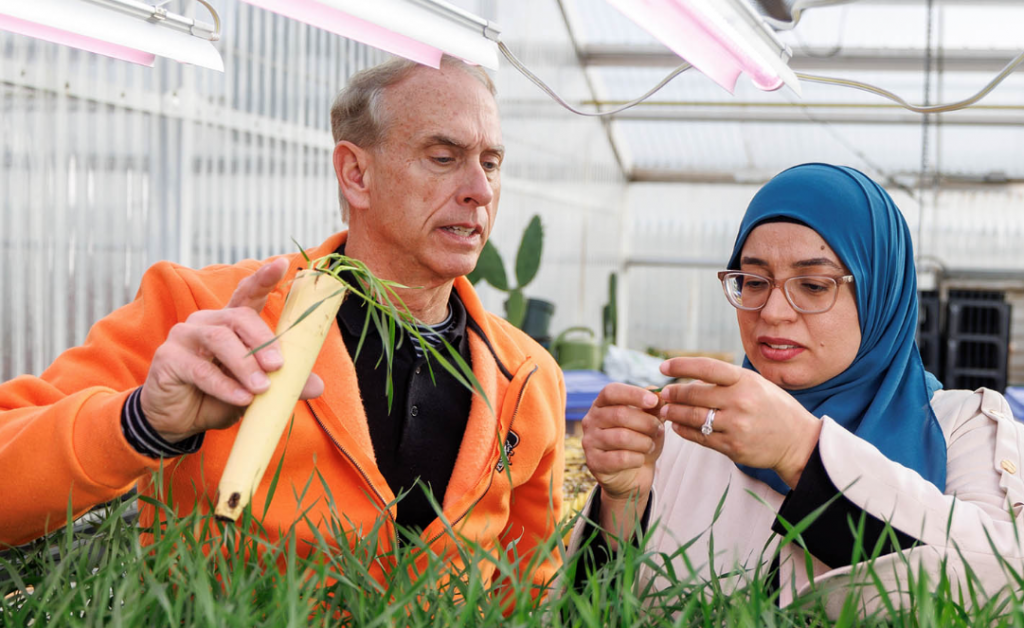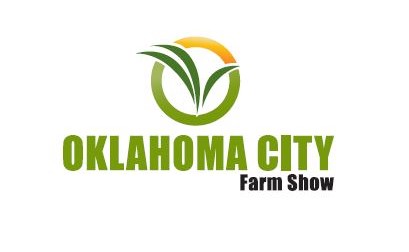
Attendees at the Chickasha Wheat forage and field day received an update on the current disease situation in Oklahoma’s wheat crop from Dr. Meriem Aoun, OSU small grains pathologist. While recent rainfall has increased the potential for fungal diseases, Dr. Aoun reported generally low levels of disease at this stage.
“So I checked during the plot tour. We are seeing some low levels of leaf spotting diseases, so I saw some symptoms of Septoria tritici blotch, and I think that’s normal due to the rain that we got lately,” Dr. Aoun explained.
Reflecting on the challenges faced by Oklahoma wheat growers this season, Dr. Aoun highlighted the fluctuating weather patterns that have impacted the crop. “It started dry in the fall to plant that early in the season, and for the growers to get that forage. Then we had all the rain, followed by a dry spring, which reduced the potential for good forage. And now we’re getting a lot of rain, so it’s changing. The weather is changing, and that’s definitely affecting what we see in terms of diseases as well.”
With the recent shift to wetter conditions, producers need to be vigilant; however, Dr. Aoun noted that the crop is in an advanced growth stage. “Now we have the rain, so once we have the moisture, we expect to see more of the fungal diseases. So I think they can scout for their field. But right now, in Chickasha, the crop is headed already. So even if the disease comes, it will be too late to cause a major impact on yield.” She also cautioned about fungicide application timing, stating, “As we go beyond that flowering stage, we really have limitations in using fungicide. But also, we should know that if it comes too late, it’s not going to affect the yield much as well.”
Regarding disease-resistant varieties, Dr. Aoun highlighted several successful options. “We have several of them, so the most recent release is Orange Blossom. That’s a variety that has very good protection against stripe rust. And even with that early stripe rust epidemic that happened last year in southwest Oklahoma, it was holding really well.”
She further explained the resistance mechanism of Orange Blossom, noting its earlier resistance compared to some other varieties. Dr. Aoun also mentioned the popularity and good disease resistance of Double Stop. “Double stop, which is the number one variety in Oklahoma, is also doing well in terms of leaf rust, stripe rust, and leaf spotting diseases. So we have different options. We have this information that is available on the OSU Extension website, but we also have some handouts given today about the varieties and how they perform, especially for the leaf rust and stripe rust, because they are the main diseases that we have in Oklahoma.”
While stripe rust is often a concern, Dr. Aoun indicated that the risk is lower this year in Oklahoma. “We are at low risk for stripe rust. We usually like to see how the stripe rust risk will be. We look at what’s happening in Texas. So if it is low in Texas, which is the case this year, then it’s most likely to be low also in Oklahoma.”
She confirmed the low presence of stripe rust during a recent visit to southern Oklahoma. “I was at Walters on Monday, and I will say only a trace level of stripe rust. So I don’t think stripe rust is going to be an issue this year.” However, she advised producers to monitor for leaf rust. “We should watch for leaf rust, because we have leaf rust in Texas, and the weather is conducive for leaf rust. Although it may be late in the season, we may see leaf rust this year.”
Looking ahead at her research, Dr. Aoun outlined ongoing efforts focused on key wheat diseases. “We do mainly leaf rust and stripe rust research. Over the last two years, we have had stripe rust in our nursery here at Chickasha. This year, we moved our nursery to Lahoma and Stillwater, just because it’s closer there. But we may go back also to Chickasha to have another stripe rust nursery as well.”
She explained the importance of these nurseries in evaluating varieties and breeding lines. “The last two years, stripe rust pressure was high, but we still can inoculate to increase the disease pressure, and that allows us to rate the varieties and the breeding clients that we have in the breeding program.”
Dr. Aoun’s research also delves into the genetic basis of disease resistance. “We are also using that data to identify the resistant genes that we have, and then develop markers so that we can track them down in the breeding pipeline and keep using them for future breeding lines.”
Dr. Aoun encouraged producers to stay informed and contact her with questions. “This season, I was getting questions about whether they should spray or not, because that depends on the disease pressure. In March and early April, I would say, ‘Okay, we have a low disease risk, so there is no need for spraying fungicide at this time.’ However, it’s always important to keep scouting in the field. Also, they ask questions about these different varieties and their resistance level to these different diseases, because that also will determine whether they need to spray fungicide or not.”

















